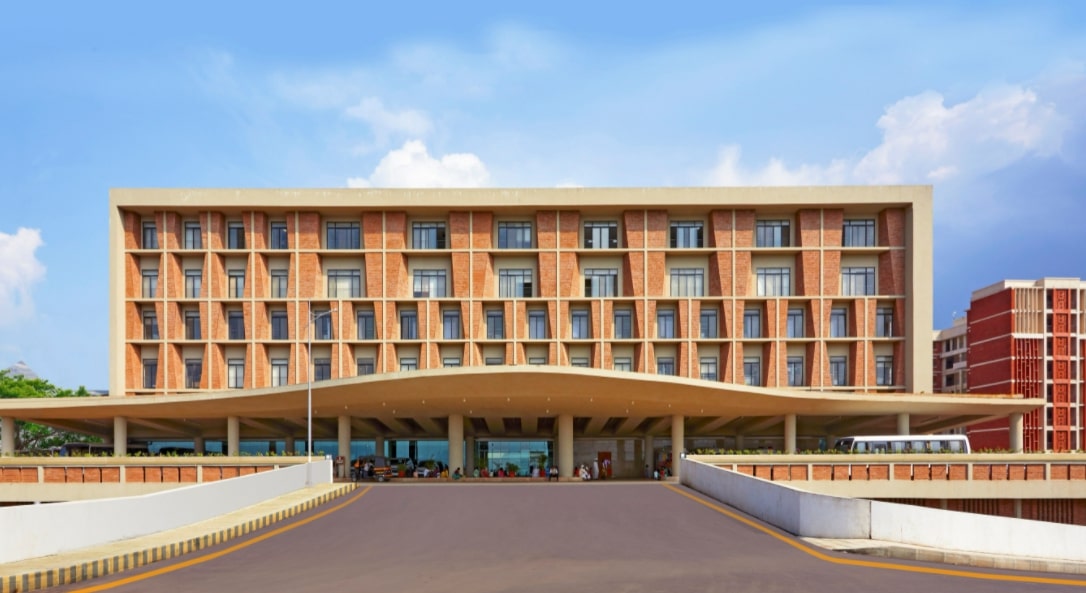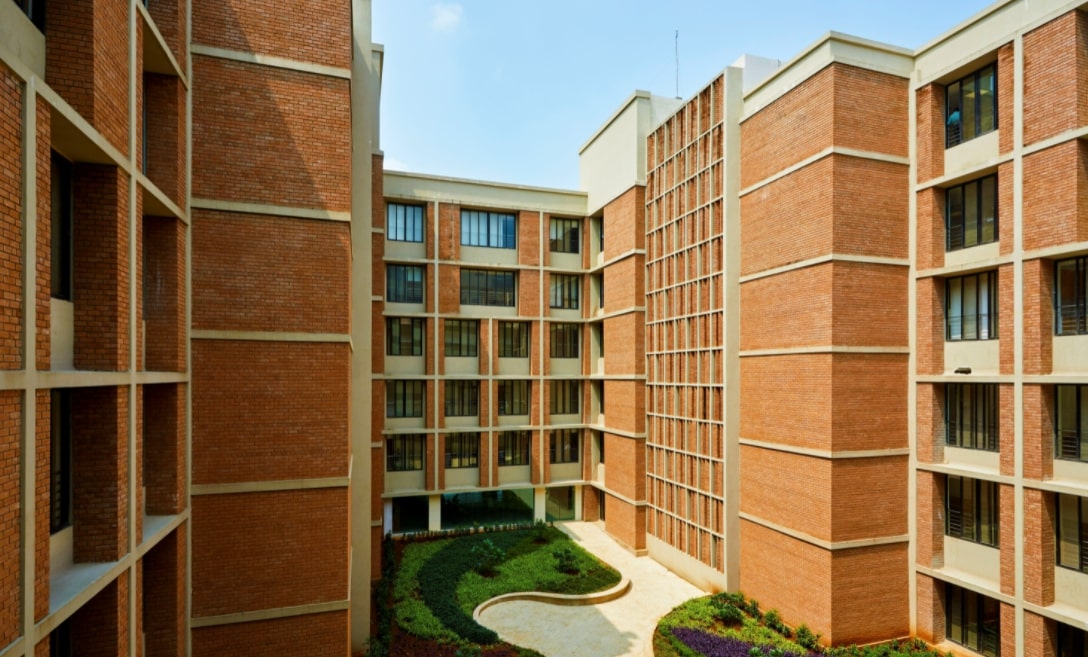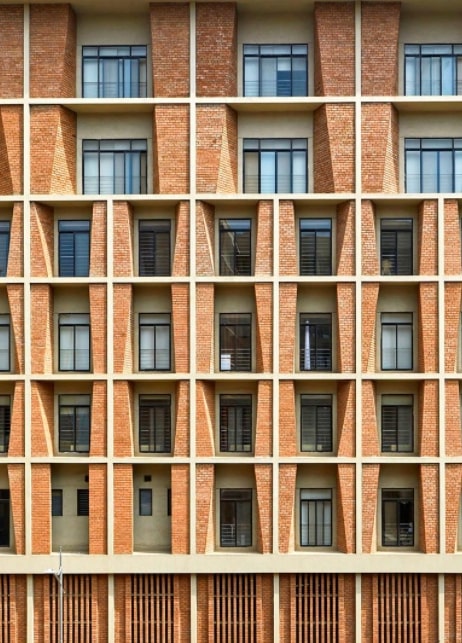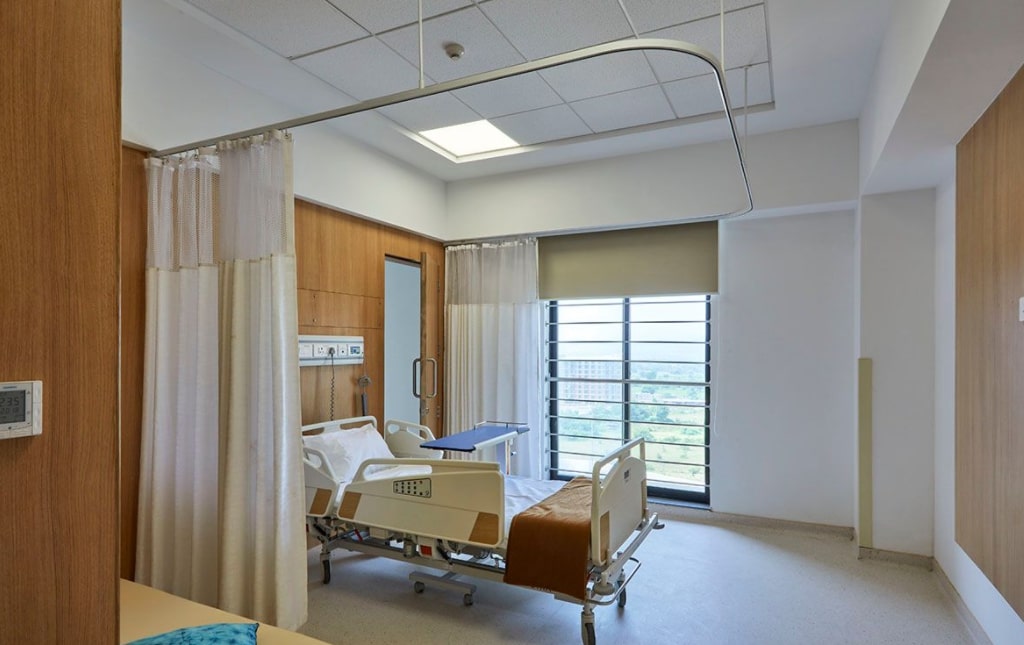Mumbai Architect’s Award-Winning Hospital Design Using Jalis Saves up to 80% Energy
Rahul Kadri's Mumbai-based firm, IMK Architects, which was founded and named after his father, has always been ahead of its time when it comes to using eco-friendly practices in their designs.

Little did Mumbai-based Rahul Kadri, Partner and Principal Architect at IMK Architects know that healthy competition among his team during a brainstorming session would bag them one of the most prestigious international awards. IMK, named after Rahul’s father and founder I M Kadri, was recently declared ‘Supreme Winner’ at the 2021 Surface Design Awards, London, for designing the Symbiosis University Hospital and Research Centre (SUHRC) in Lavale, Pune.
It all started when Dr Vidya Yeravdekar, Executive Director of Symbiosis Society, approached IMK to design a healthcare facility that would cater to every aspect of efficient healthcare delivery while incorporating pro-environment elements.
“We conducted a competition in the office where everyone was asked to present energy-efficient ideas. A couple of weeks later, we had three design schemes. Seeing the smiles of Dr Yeravdekar and other senior members of Symbiosis Society, we knew we had nailed it. Our designs reflected people’s needs, the kind of spaces in a medical facility that would heal patients holistically, foster social interaction and achieve appropriate hygiene standards,” Rahul tells The Better India.

Inspired by the idea of biophilia—an innate human tendency to seek connections with nature and other forms of life—the firm designed the state-of-the-art architectural finesse from sundried earthen bricks and used double-skinned facade, cavity walls and jaalis to prevent internal heating, maximise thermal comfort and reduce overall energy consumption.
“I am a doctor and the SUHRC project is very close to my heart. Rahul and his team’s strategic designs not only cater to every aspect of efficient healthcare delivery but also addresses elements of sustainability. The hospital was our dream project which IMK Architects turned into reality,” says Dr Yeravdekar, who is also the Pro-Chancellor at Symbiosis International, Deemed University.
The multi-speciality hospital is now being used as a COVID-19 healthcare centre.
Seeking Nature’s Inspiration

I M Kadri’s practice flourished in the newly independent India, in 1957, as he fine-tuned his designs in sync with mammoth transformations that leaned towards eco-friendly practices.
“Environment has shaped the firm’s design philosophy which is based on Biophilic Architecture that incorporates factors like natural lighting and ventilation. We ensure our designs provide vibrant and warm spaces by focussing on social consciousness and urban ecological sensitivity. The principles of efficiency, sustainability and people-centric design have always been at the heart of our work,” adds Rahul.
The architectural firm has built over 150 buildings across four countries, including landmarks such as Shivsagar Estate and Nehru Centre in Mumbai, Kowloon Mosque in Hong Kong, Lake Palace Hotel in Udaipur, Kashmir University Projects in Srinagar, The Oberoi Bangalore and National Judicial Academy in Bhopal, among many others.
Award-winning materials and strategies

The undisputed highlight of the hospital is the Compressed Sun-dried Earth Brick (CSEB). It is a low-cost alternative and a carbon-neutral building material that reduces transportation cost and carbon footprints.
The bricks are made from a mix of different types of reused soils like red soil, sand and murum and stabilised with 7 per cent cement for better durability. They were made on-site by using a block-making machine, thus preventing carbon emissions.
“The bricks were sundried as opposed to kiln fired, making it an eco-friendly process. For this, we hired the local masons, who did a splendid job in using the CSEB, for designing different facade compositions—such as cladding, boxing, twisted and screen jaalis–to create a strong visual identity. In the interiors, smaller details have been taken into account to ensure a calm and serene atmosphere that promotes healing while encouraging research and creating spaces that are easy to use and maintenance-free,” explains Rahul, an alumnus of the University of Michigan.

He adds that CSEB has the potential of slashing energy consumption by 80 per cent due to its thermal insulation properties, thereby also reducing operational costs.
The double-skin facade with deeper shading projections ensures the building is maintenance-free and traps heat. Vibrant native plants, including shrubs and small trees inside the premises, further control the micro-climate within the hospital.
The hospital’s two large courtyards act as buffer zones, allowing for ample daylight into the premises. The OPD has no air-conditioning but allows for fresh, natural air while ensuring sufficient ventilation. Similarly, at all levels, a 3-metre-wide corridor abuts the central courtyard, and brings in natural light and ventilation, thereby reducing the artificial lighting and cooling loads.
Additionally, the hospital has a rainwater harvesting system that saves 20 to 25 per cent of the flushing water intake during the monsoons. It also has a water recycling unit that treats wastewater which is then used for watering gardens.
Asked if the notion of a green building being expensive is true, Rahul says while the initial costs may seem high, the lifecycle cost of the project will make up for the initial costs within the next five years. Passive design strategies go a long way in reducing energy consumption.

“Place longer facades to face the north and south directions. Large windows in the north will allow ample glare-free light into rooms, while sunshades such as staircases in the west will prevent heat gain. Incorporating open spaces and corridors are some of the few simple design strategies one could implement. Additionally, the incorporation of a courtyard or atrium in the centre of a building–commonly found in the layout of Indian traditional houses—aids in cooling, cross ventilation and brings in ample daylight, which in turn reduces artificial lighting and mechanical cooling loads,” he adds.
Edited by Yoshita Rao
If you found our stories insightful, informative, or even just enjoyable, we invite you to consider making a voluntary payment to support the work we do at The Better India. Your contribution helps us continue producing quality content that educates, inspires, and drives positive change.
Choose one of the payment options below for your contribution-
By paying for the stories you value, you directly contribute to sustaining our efforts focused on making a difference in the world. Together, let’s ensure that impactful stories continue to be told and shared, enriching lives and communities alike.
Thank you for your support. Here are some frequently asked questions you might find helpful to know why you are contributing?


This story made me
-
97
-
121
-
89
-
167











